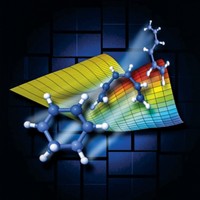Advertisement
Grab your lab coat. Let's get started
Welcome!
Welcome!
Create an account below to get 6 C&EN articles per month, receive newsletters and more - all free.
It seems this is your first time logging in online. Please enter the following information to continue.
As an ACS member you automatically get access to this site. All we need is few more details to create your reading experience.
Not you? Sign in with a different account.
Not you? Sign in with a different account.
ERROR 1
ERROR 1
ERROR 2
ERROR 2
ERROR 2
ERROR 2
ERROR 2
Password and Confirm password must match.
If you have an ACS member number, please enter it here so we can link this account to your membership. (optional)
ERROR 2
ACS values your privacy. By submitting your information, you are gaining access to C&EN and subscribing to our weekly newsletter. We use the information you provide to make your reading experience better, and we will never sell your data to third party members.
Analytical Chemistry
Potent X-rays Reveal Protein Contortions
New time-resolved crystallography approach could yield additional insight into reaction mechanisms
by Jyllian Kemsley
December 8, 2014
| A version of this story appeared in
Volume 92, Issue 49
Ultrashort, intense X-ray bursts have been used in the past few years to glean structural information from streams of protein nanocrystals, soot, water droplets, and even single molecules. The same approach can also yield structures of short-lived protein reaction intermediates at near-atomic resolution, reports a team led by Marius Schmidt of the University of Wisconsin, Milwaukee (Science 2014, DOI: 10.1126/science.1259357). Researchers have obtained time-resolved crystal structures using traditional synchrotron X-rays, but that approach requires large crystals and the time resolution is limited to about 100 picoseconds. Using SLAC National Accelerator Laboratory’s Linac Coherent Light Source, Schmidt and his colleagues studied light-initiated reactions of a bacterial photoreceptor called photoactive yellow protein, in which laser excitation induces a chromophore switch from a trans to a cis configuration that is associated with protein conformational changes. The scientists were able to combine X-ray pulses with protein microcrystals to determine structures to 1.6 Å and detect previously unidentified structural changes. With further development, the technique likely can produce high-quality structures with subpicosecond time resolution for a variety of biologically and pharmaceutically interesting proteins, the researchers say.






Join the conversation
Contact the reporter
Submit a Letter to the Editor for publication
Engage with us on Twitter